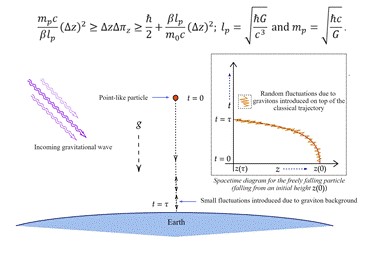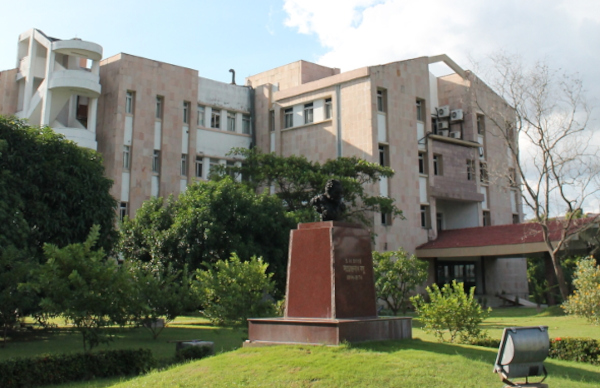n a step forward to unify the classical theory of gravitation and quantum mechanics researchers, through their calculations have obtained an uncertainty relation induced from the noise of gravitons—the hypothetical quantum of gravity, an elementary particle that mediates the force of gravitational interaction. While classical physics is a set of laws and equations that describe how ordinary objects behave, quantum physics describes the world of atoms and smaller objects.
Mr. Soham Sen and Prof. Sunandan Gangopadhyay of the Department of Astrophysics (IIA) and High Energy Physics at S.N. Bose National Centre for Basic Sciences, have been engaged in finding signatures of quantum gravity in terrestrial systems which would lead towards a better understanding of a complete quantum theory of gravity, a fundamental problem which is unsolved from the time of Albert Einstein.
Quantum gravity (QG) is a field of theoretical physics that seeks to describe gravity according to the principles of quantum mechanics. It deals with environments in which neither gravitational nor quantum effects can be ignored,[1] such as in the vicinity of black holes or similar compact astrophysical objects, such as neutron stars.
It has earlier been shown that when the gravitational field is treated quantum mechanically, it induces fluctuations, or noise, in the lengths of the arms of gravitational wave detectors like LIGO’s interferometer.
The characteristics of the noise depend on the quantum state of the gravitational field. Detection of this fundamental noise would constitute direct evidence for the quantization of gravity and the existence of gravitons—the connecting link between Gravitation and Quantum theory.
Taking forward works like this, Prof. Gangopadhyay and Mr. Soham Sen have examined the fate of freely falling bodies in a quantum gravitational field. Their calculations have obtained an uncertainty relation between the position and momentum variables induced from the noise of gravitons.
The uncertainty relation indicates a true quantum gravitational effect and the calculations clearly indicate that there is true coupling of the degrees of freedom of the particle with the quantized gravitational field.
“Our derivation of the generalized uncertainty principle is robust in the sense that the result was obtained by taking into account the quantum nature of gravity”, said Prof. Sunandan Gangopadhyay.
Publication links:
- Soham Sen and Sunandan Gangopadhyay, “Uncertainty principle from the noise of gravitons”, Eur. Phys. J. C 84 (2024) 116.
- S. Chawla and M. Parikh, “Quantum gravity corrections to the fall of an apple”, Phys. Rev. D 107 (2023) 066024.

*
You may also like
-
New Heat-Based Approach To Cancer Treatment Can Reduce Chemotherapy Doses
-
India Graphene Engineering and Innovation Centre (IGEIC) Under the Vision of Viksit Bharat@2047 Launched
-
New High-Performance Gas Sensor can Monitor Low Level Nitrogen Oxides Pollution
-
Antidepressant Drug can be Repurposed for Treating Breast Cancer
-
Mechanically Gated Transistor Developed Using Single Molecule for Faster, Greener Electronics
